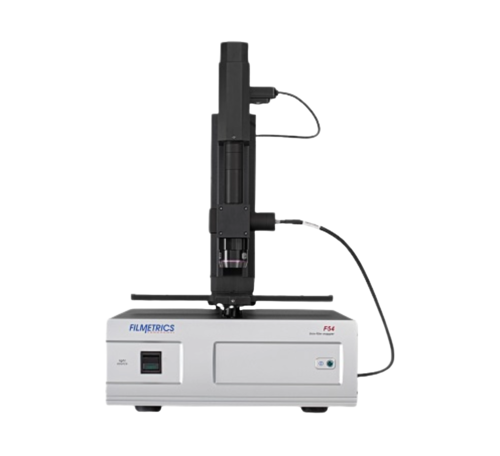Why Optical Fibre Diameter Analyser Devices Are Important for Engineers
Why Optical Fibre Diameter Analyser Devices Are Important for Engineers
Blog Article
Enhance Your Fiber Optic Projects With an Efficient Diameter Analyser
The integration of an efficient size analyser into fibre optic projects offers as a crucial component in attaining precision and consistency. By facilitating accurate size dimensions, these analysers not only enhance the quality of installments yet additionally alleviate prospective compatibility issues amongst elements.
Importance of Size Dimension
Measuring the diameter of fiber optic wires is an important job that makes certain optimum performance and dependability in communication systems. Precise diameter dimension is important for various factors, largely for keeping signal honesty and reducing loss. A wire's diameter directly affects its capacity to send light effectively; discrepancies from the defined size can lead to increased attenuation, which influences the general performance of the network.
Additionally, precise measurement is crucial during the setup and maintenance of fiber optic systems. An inappropriate fit in between wires and adapters can cause signal deterioration or total failure of communication web links. By ensuring that sizes are within defined resistances, service technicians can improve compatibility between parts, leading to improved system integrity.
Additionally, size measurement plays a significant duty in high quality control during manufacturing. Uniformity in the size of fiber optic cables is vital for making certain consistent efficiency throughout different sets. optical fibre diameter analyser. This consistency helps suppliers preserve industry standards and cultivates confidence amongst end-users
Functions of an Efficient Analyser
A reliable analyser for fibre optic tasks should incorporate numerous essential attributes that improve precision and functionality in size measurement. High-resolution optical sensors are crucial for accurate size readings, making it possible for individuals to detect even the least variations in fibre density. These sensors must be complemented by sophisticated calibration systems, making certain consistent efficiency throughout different problems and materials.
Secondly, a straightforward interface is important for promoting ease of operation. This includes intuitive software application that permits seamless data input and result, together with graphes of the dimensions taken. A mobile layout boosts usability in various area settings, making it easier to conduct assessments on-site.
Furthermore, the analyser must sustain multiple measurement modes, suiting numerous fiber kinds and applications. The ability to shop and retrieve historical data is one more essential function, enabling individuals to track efficiency over time and make informed decisions.
Benefits for Fibre Optic Projects
Implementing a diameter analyser in fibre optic tasks offers substantial benefits that considerably improve job effectiveness and quality. One of the primary benefits is the capacity to ensure precise dimensions of fiber size, which is important for maintaining optimal efficiency in fiber optic systems. Precise diameter readings aid in the recognition of incongruities that can cause indicate degradation or loss, thus ensuring top quality transmission.
Additionally, making use of a diameter analyser streamlines the quality assurance procedure. By automating measurement jobs, job teams can lower the moment invested on hands-on evaluations, bring about faster job completion and lowered labour prices. This performance likewise permits for even more rigorous screening protocols, causing improved item dependability.
Moreover, consistency in fiber diameter measurements advertises compatibility with other fiber optic elements, lessening the danger of installation mistakes and enhancing total system performance. The unification of a diameter analyser not just aids in keeping industry criteria but likewise fosters confidence in task deliverables.
Assimilation Into Existing Process
Incorporating a diameter analyser right into existing operations can considerably boost the operational effectiveness of fibre optic tasks. By perfectly including this technology, teams can accomplish specific measurements that are crucial to keeping the integrity and performance of fibre optic systems. This assimilation allows for real-time data collection and analysis, which can be vital throughout the manufacturing and setup stages.
In addition, the ability to automate diameter measurement processes minimizes the possibility for human mistake, guaranteeing constant quality assurance throughout the task lifecycle. The information generated can be quickly shared throughout systems, promoting collaboration among designers, technicians, and job supervisors. This access boosts decision-making and accelerates project timelines.

Selecting the Right Size Analyser
When selecting a diameter analyser for fiber optic tasks, it is vital to think about a number of key factors that directly influence measurement precision and operational efficiency. The resolution and precision of the analyser need to line up with the specific demands of your project. Greater resolution tools can discover minute variants in diameter, which is essential for ensuring ideal efficiency in fibre optic systems.
For jobs with tight due dates, a size analyser that provides quick data acquisition can significantly enhance efficiency. Furthermore, consider the analyser's compatibility with existing systems and software program.
One more essential factor is the array of sizes the analyser can accommodate. By meticulously reviewing these aspects, you can select a size analyser that boosts the effectiveness and accuracy of your fiber optic projects.
Verdict
In conclusion, the combination of a check out here reliable diameter analyser is vital for boosting fiber optic projects. Specific diameter dimensions ensure ideal efficiency and reliability while lessening installation mistakes (optical fibre diameter analyser).
A cable's diameter directly affects its capacity to transmit light efficiently; variances from the defined diameter can lead to raised depletion, which affects the overall performance of the network.

Report this page